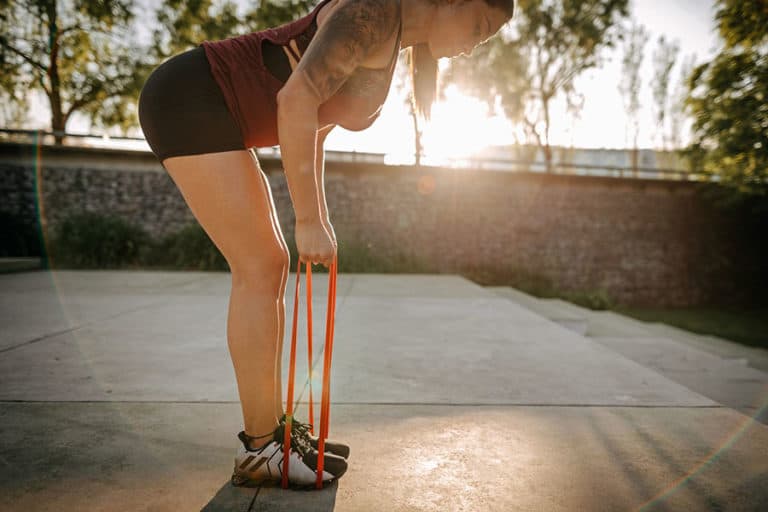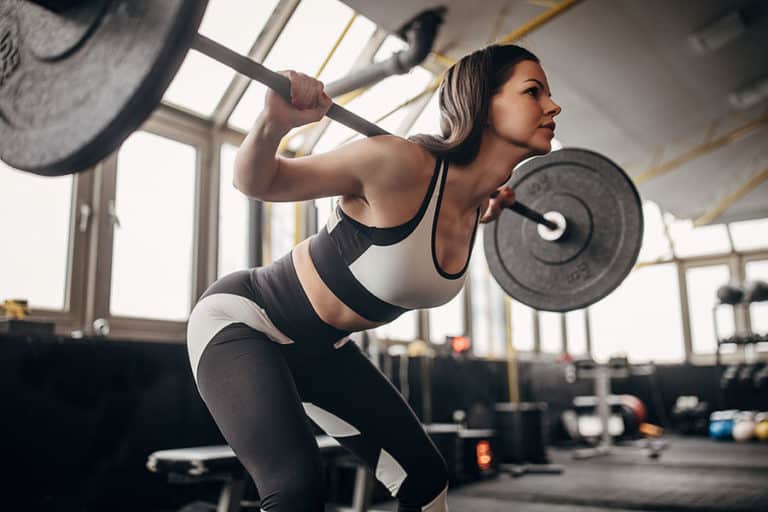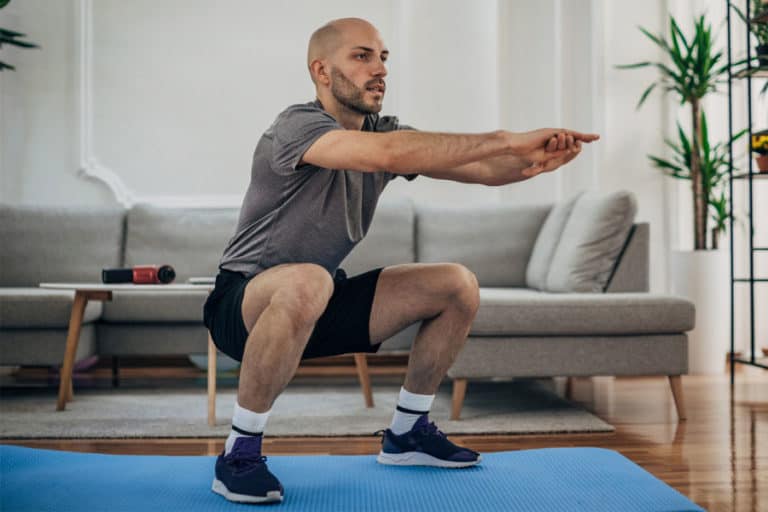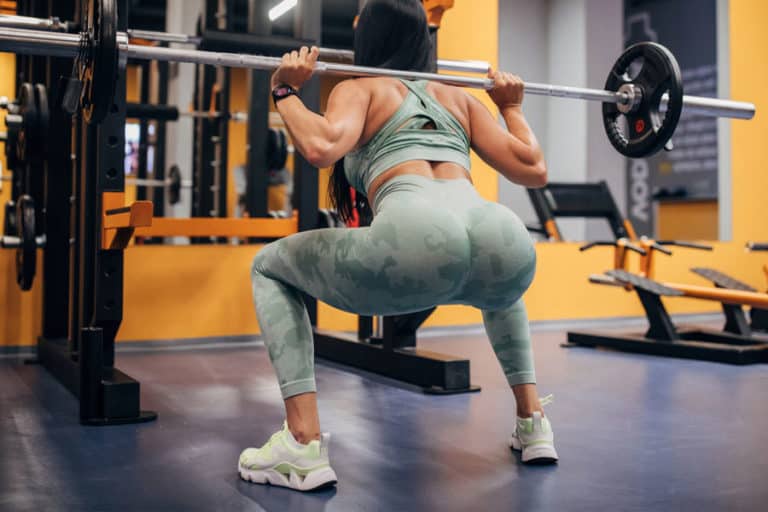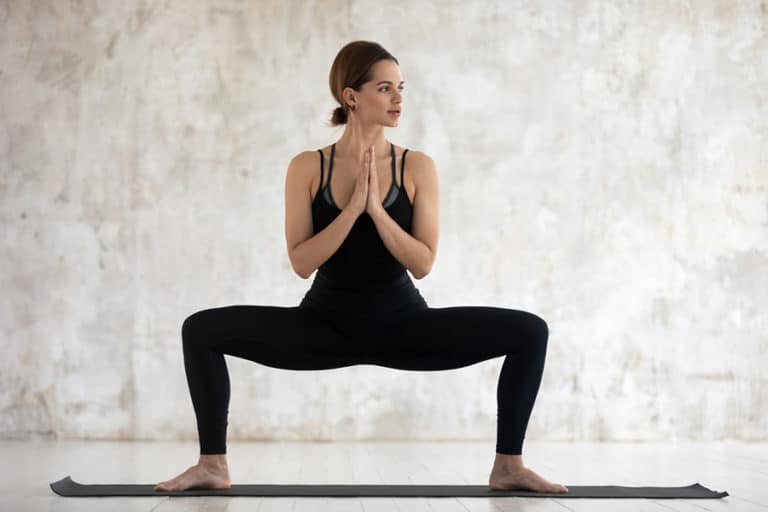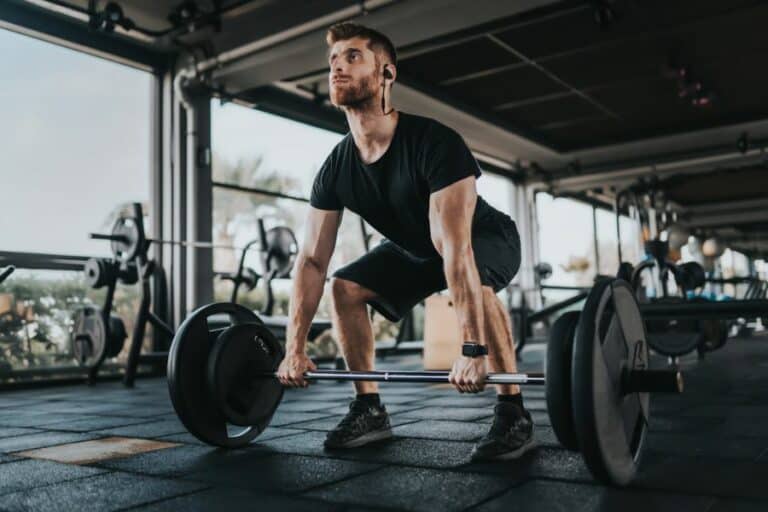Deep Squat – How To Do, Benefits, And Safety Measures
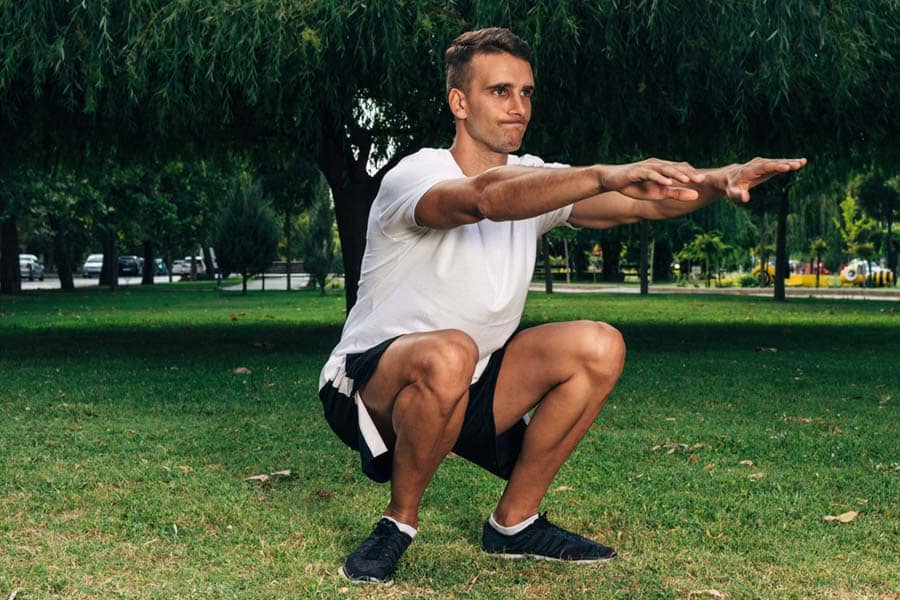
How to do | Muscles worked | Progression | Who Should Avoid | Add to routine | Safety Measurements | Benefits | Common Mistakes | Factors
Deep squats, partial squats, and parallel squats make up the three basic categories of squats. A half squat is when the individual lowers their hips halfway to the floor. A parallel squat is when the individual lowers their hips until their thighs are parallel to the floor.
In a deep squat, the individual squats to an extent where the hips break past the parallel and the butt touches their lower shins or heels.
How to do a deep squat?
- Start by standing with your feet shoulder-width apart and your toes pointing forward.
- Keeping your chest up and back straight, lower yourself down by pushing your hips back and bending your knees.
- Continue lowering your hips until your thighs have descended past parallel and your knees are at less than a 90-degree angle.
- Pause for a moment in this position, and inhale deeply.
- Then exhale as you drive your hips back up to the starting position.
Muscles worked
A deep squat is a great way to work on hips, knees, ankles, and trunk muscle groups simultaneously. Here are the muscles worked when you squat deep.
Primary muscles worked
| Quadriceps | rectus femoris, vastus intermedius, vastus lateralis, and vastus medialis |
| Gluteal muscles | gluteus maximus, gluteus minimus, and gluteus medius |
| Hip flexors | iliacus, psoas, pectineus, and sartorius |
| Adductor | adductor brevis, adductor longus, adductor magnus, and gracilis |
Secondary muscles activated
| Hamstrings | biceps femoris, semimembranosus, and semitendinosus |
| Calves | gastrocnemius and soleus |
| Core and abdominal muscles | rectus abdominis, transverse abdominis, obliques, and erector spinae |
Deep squat progression
As mentioned earlier in this article, there are three categories of squats based on their squat depth.
- Partial squat or half squat: when your knee angle is > 90 degrees
- Parallel squat: when your knee angle is 90 degrees
- Deep squat or full squat: when your knee angle is < 90 degrees
Try the following squat positions’ levels to assist your deep squat motion and increase the intensity as you progress.
Prep Phase: Wall squat
If you are new to squatting, start your squat journey with a wall squat. It is a simple movement where you lean against a wall and slide down to a squat position. This will help to ensure that your squat form is correct and help build the required strength to move on to the next level.
beginner phase: Box squat
If you are a beginner, you can start with box squats. Box squat assists you in improving your form and squat depth. When you squat with the support of a box, you can feel the ease in the movement. It also helps you practice getting into a deep squat position. Slowly, you can progress to deep squats without the box.
intermediate Phase: Deep squat
Once you master box squat, you can move to deep squat. You will need to have good mobility and flexibility to do this correctly. Progressing gradually to this level is important to avoid injuries.
advanced Phase: Deep overhead squat
To increase the intensity of your squats, you can add a barbell as a weight. This weighted squat will help to build more strength and power in your lower body.
Are deep squats bad for you?
Generally, deep squats are not bad for you [1]Strength and Conditioning Journal: Are Deep Squats a Safe and Viable Exercise? as long as you perform them with proper form and technique. However, deep squatting may not be suitable for everyone.
Here is a list of people who should avoid deep squats:
- People with knee injuries, hip injuries, and lower back pain
- People with hernia condition
- Pregnant women
Adding it to your routine
You need to incorporate deep squats into your workout routine gradually. Here is a sample to add a deep squat based on your progression and flexibility.
Sample circuit
Here is a sample circuit for beginner-level fitness enthusiasts to add deep squats to their routine.
| Beginner Level Exercises | Reps |
| Warm-up (spot jogging) | 2-3 minutes |
| Leg lifts | 2-3 sets of 10-12 reps |
| Wall squats | 2-3 sets of 10 reps |
| Deep squat | 2-3 sets of 3-4 reps |
| Child’s pose (cooldown) | 2-3 minutes |
If you are at an intermediate or advanced fitness level, then here is a sample circuit you can follow to incorporate deep squats into your routine.
| Intermediate/Advanced Level Exercises | Reps |
| Warm-up (spot jogging) | 2-3 minutes |
| Deep squats | 4-5 sets of 6-8 reps |
| Box squats with light to moderate weight | 2-3 sets of 18-20 reps |
| Curtsy lunge with moderate to heavy weights | 3-5 sets of 6-8 reps |
| Child’s pose (cooldown) | 2-3 minutes |
Safety measurements
Here are some safety measures you need to follow to avoid injuries during a deep squat.
Warm up and stretch
Start your deep squats with some warm-ups and stretches. This will help to reduce your risk of injury and improve your performance.
Keep your spine tall
Keeping your spine straight and in a neutral position when doing a deeper squat is essential. This will help to avoid rounding your back and putting unnecessary strain on your spine.
Maintain the right position of the knees
While squatting, ensure your knees are in line with your toes. This will help to avoid putting too much pressure on your knees and prevent injury.
Keep your feet in the right position
To deep squat safely, keep your knees inline with the adductors. This will help you to maintain balance and improve stability.
Squat as deep as your body allows
When squatting, only go as deep as your body allows. This will help to avoid putting too much pressure on your joints and squat better.
Raise your body up in the right position
When raising your body from the squat position, make sure to use your leg muscles. This will help to avoid putting too much pressure on your knees and improve your performance.
Benefits
Due to the increased range of motion, the benefits of deep squats differ slightly from basic squats [2]Strength and Conditioning Journal: Muscle Activation Differs Between Partial and Full Back Squat Exercise With External Load Equated.
Full body workout
As a deep squat requires a full range of motion, it works more than just your legs.
From ankle mobility to strengthening the shoulders, core, and spine, deep squats engage all the joints and muscles. This makes it an effective exercise for improving full-body strength and coordination.
Improved knee health
When done correctly, a deep squat can help to improve knee health.
Deep squats strengthen the muscles around the knee joint, leading to stronger ligaments and better stability. This can help to prevent injuries, as well as relieve pain from conditions such as arthritis [3]National Library of Medicine: Static Low-Angle Squatting Reduces the Intra-Articular Inflammatory Cytokines and Improves the Performance of Patients with Knee Osteoarthritis.
Increased muscle mass
Deep squats require more energy and recruit more muscle fibers than standard squats. This means when you are squatting with full depth, you develop the lower limb muscles [4]PubMed: Effects of squat training with different depths on lower limb muscle volumes effectively, resulting in increased muscle mass.
Improved hip mobility
The deep squat position can help to improve hip mobility. This is because it stretches the muscles and connective tissues around the hips.
If you have tight hips, doing deep squats can help to loosen them up and increase your range of motion. This can lead to improved performance in other exercises and daily activities.
Common mistakes to avoid
Although deep squats offer many benefits, they also come with a few risks. It’s essential to avoid these common mistakes to stay safe and get the most out of this exercise.
Rounded back
One of the most common mistakes people make when doing deep squats is rounding their back. This can put unnecessary strain on the spine and lead to injuries.
Tip – To avoid this, keep your chest up and back straight throughout the entire exercise. This will help you to maintain a neutral spine position and avoid rounding your back.
Standing up too quick
Standing up too quickly after performing a deep squat can cause you to feel dizzy or lightheaded. This is because blood flow is directed to your legs during the exercise, and it takes a few moments to return to your head.
Tip – To avoid this, stand up slowly and take a few deep breaths before continuing with your routine.
Lifting your heels
Another common mistake is lifting your heels or putting too much pressure on your toes while squatting. This can cause you to lose balance and strain your knees unnecessarily.
Tip – To avoid this, keep your weight evenly distributed throughout your feet. You should also focus on keeping your heels down throughout the entire exercise.
Factors influencing how deep you squat
Your squat form depends upon various factors. Here is a list of factors that influence your squat depth.
Ankle stiffness
Ankle stiffness makes it tough to squat deeper. To improve your squatting depth, you need to work on stretching and mobilizing your ankles by doing some ankle mobility exercises.
Limb length
The limb length has a lot of influence on your ability to squat deep. If you have longer legs than average, you may find it difficult to hit full squat depth.
This is because longer legs impact body positioning and make you lean forward. You may need to adjust your technique or use props to help you reach the desired depth.
Hip shape and size
The shape and size of your hips can also affect how deep you can squat. Those with narrower hips may find it more difficult to squat deeply, while those with wider hips may not.
History of injury
If you’ve had an injury to your knees, back, or hips in the past, this could be affecting your ability to squat deep. It’s important to listen to your body and not push yourself too hard if you’re in pain.
Conclusion
Deep squats are a great lower-body exercise. There is no evidence that squatting increases the risk of a knee injury. However, if you are new to deeper squats, it’s always a good idea to do them under the guidance of a trainer. This will help you to learn the correct technique and avoid injuries.
References
| ↑1 | Strength and Conditioning Journal: Are Deep Squats a Safe and Viable Exercise? |
|---|---|
| ↑2 | Strength and Conditioning Journal: Muscle Activation Differs Between Partial and Full Back Squat Exercise With External Load Equated |
| ↑3 | National Library of Medicine: Static Low-Angle Squatting Reduces the Intra-Articular Inflammatory Cytokines and Improves the Performance of Patients with Knee Osteoarthritis |
| ↑4 | PubMed: Effects of squat training with different depths on lower limb muscle volumes |


